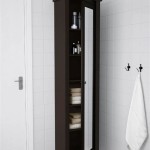How To Use Screen Mirroring On Your Hisense Smart TV
Screen mirroring has become an increasingly valuable feature for smart TV owners, enabling the effortless sharing of content from mobile devices, laptops, and tablets directly onto the larger screen. This capability is particularly useful for presentations, sharing photos and videos with family and friends, or simply enjoying mobile games on a more immersive display. Hisense Smart TVs, known for their affordability and diverse functionality, often support various screen mirroring protocols. This article will provide a comprehensive guide on how to effectively utilize screen mirroring on a Hisense Smart TV.
Before attempting to mirror any device, it is crucial to ascertain the specific mirroring technology supported by the Hisense Smart TV. This varies depending on the TV model and operating system. Common technologies include Miracast, Chromecast built-in (for Android devices), and AirPlay (for Apple devices). Reviewing the product specifications in the user manual or on the Hisense website is highly recommended. Understanding which technology your TV supports is the first step in a successful mirroring process.
Identifying Compatible Devices and Technologies
The success of screen mirroring hinges on the compatibility of both the source device (phone, tablet, or laptop) and the Hisense Smart TV. Most modern smartphones and tablets running Android or iOS operating systems are equipped with screen mirroring capabilities. Laptops, especially those running Windows, often support Miracast, a wireless display standard developed by the Wi-Fi Alliance. Apple devices, such as iPhones, iPads, and MacBooks, typically use AirPlay. It is important to note that some older devices may not support these technologies or may require specific software updates.
To ensure compatibility, verify that both the source device and the Hisense Smart TV are connected to the same Wi-Fi network. This is a fundamental requirement for most screen mirroring protocols. Furthermore, confirm that both devices have the latest operating system or software updates installed. Updates often include bug fixes and performance improvements that can enhance screen mirroring functionality. In certain cases, specific apps may be required on the source device to facilitate mirroring. For instance, some third-party screen mirroring apps may offer additional features or compatibility with older devices.
In addition to Miracast, Chromecast, and AirPlay, some Hisense Smart TVs may support other proprietary screen mirroring technologies. These technologies are often specific to the TV manufacturer or a particular ecosystem. While they may offer enhanced performance or unique features, they typically require the use of specific apps or devices from the same brand. Understanding the nuances of these technologies is crucial for choosing the most appropriate mirroring method.
Mirroring from Android Devices Using Miracast
Miracast, a widely adopted wireless display standard, allows Android devices to seamlessly mirror their screens to compatible displays, including many Hisense Smart TVs. The process generally involves enabling screen mirroring on both the Android device and the TV. On the Android device, this feature is often found under names like "Screen Mirroring," "Smart View," "Wireless Display," or "Cast Screen." The exact terminology may vary depending on the Android version and device manufacturer.
To initiate screen mirroring via Miracast, the user typically has to access the device's settings menu, locate the "Display" or "Connectivity" section, and then select the screen mirroring option. The device will then scan for available Miracast-enabled displays, including the Hisense Smart TV. Once the TV is detected, the user selects it from the list, and a connection request is sent to the TV.
On the Hisense Smart TV, ensure that Miracast is enabled. This might involve navigating to the TV's settings menu, selecting "Network" or "Display," and then finding the Miracast or Wireless Display option. Activating this feature allows the TV to receive and accept connection requests from Android devices. Once the connection request is received, the user may need to grant permission for the device to connect. After the connection is established, the Android device's screen will be mirrored on the TV display.
Occasionally, connectivity issues may arise during the Miracast process. Common troubleshooting steps include restarting both the Android device and the Hisense Smart TV, ensuring that both devices are connected to the same Wi-Fi network, and verifying that the Miracast feature is enabled on both devices. Interference from other wireless devices can also disrupt the connection. Moving the devices closer to each other or minimizing sources of interference can improve the mirroring experience.
Mirroring from iOS Devices Using AirPlay
AirPlay, Apple's proprietary wireless streaming technology, enables users to effortlessly stream content from iPhones, iPads, and Macs to compatible devices, including certain Hisense Smart TVs. To utilize AirPlay, both the iOS device and the Hisense Smart TV must support the technology. Newer Hisense Smart TV models often come with AirPlay 2 compatibility built-in. This can be confirmed in the TV’s specifications or settings.
To initiate AirPlay mirroring from an iOS device, ensure that both the device and the Hisense Smart TV are connected to the same Wi-Fi network. Then, access the Control Center on the iOS device by swiping down from the top-right corner of the screen (on newer iPhones and iPads) or swiping up from the bottom of the screen (on older iPhones and iPads). In the Control Center, locate the "Screen Mirroring" icon, which resembles two overlapping rectangles.
Tap the "Screen Mirroring" icon, and the iOS device will scan for available AirPlay-enabled devices, including the Hisense Smart TV. Select the TV from the list, and a passcode may appear on the TV screen. Enter this passcode on the iOS device to establish a connection. Once the connection is established, the iOS device's screen will be mirrored on the TV display.
Using AirPlay offers advantages in terms of integration and performance within the Apple ecosystem. It provides a seamless and reliable screen mirroring experience, especially for streaming videos, photos, and presentations. If AirPlay is not functioning correctly, verify that both devices are connected to the same Wi-Fi network and that the Hisense Smart TV has AirPlay enabled in its settings. Restarting both devices can also resolve connectivity issues. Additionally, ensure that the iOS device is running the latest version of iOS, as updates often include improvements to AirPlay functionality.
Troubleshooting Common Screen Mirroring Issues
Despite the ease of use of screen mirroring technologies, users may encounter occasional issues. One common problem is the inability to detect the Hisense Smart TV from the source device. This issue often stems from network connectivity problems. Ensure that both devices are connected to the same Wi-Fi network and that the Wi-Fi network is functioning correctly. Restarting the router can also resolve network-related issues.
Another frequent issue is a lag or stuttering during screen mirroring. This can be caused by a weak Wi-Fi signal or interference from other wireless devices. Moving the devices closer to the router or minimizing sources of interference can improve the mirroring performance. Additionally, closing unnecessary apps and processes on both the source device and the Hisense Smart TV can free up resources and enhance the mirroring experience.
In some cases, the screen resolution or aspect ratio may not be optimal during screen mirroring. This can result in a distorted or cropped image on the TV display. Many Hisense Smart TVs offer options to adjust the screen resolution and aspect ratio in the settings menu. Experimenting with these settings can help optimize the display for screen mirroring.
Finally, if all other troubleshooting steps fail, consider updating the firmware on the Hisense Smart TV. TV manufacturers often release firmware updates that include bug fixes and performance improvements. Checking for and installing the latest firmware can resolve compatibility issues and improve the overall screen mirroring experience. The process for updating the firmware typically involves navigating to the TV's settings menu and selecting the "Software Update" or "System Update" option.

Hisense Tv Screen Mirroring A Full Guide Airdroid

Hisense U6hf Screen Mirroring Setup Wirelessly Connect Phone To Tv

Hisense Tv Screen Mirroring For Iphone Ipad Free App

Easy Ways To Connect Hisense Tv Your Phone With Pictures

Hisense Vidaa Smart Tv How To Screen Mirror Android Phone

A Complete Guide To Screen Mirroring Hisense Tv Flashget Cast

Free How To Mirror Android Hisense Smart Tv Airbeamtv

Easy Ways To Connect Hisense Tv Your Phone With Pictures

A Complete Guide To Screen Mirroring Hisense Tv Flashget Cast

Hisense Vidaa Tv How To Screen Mirror Your Phone








